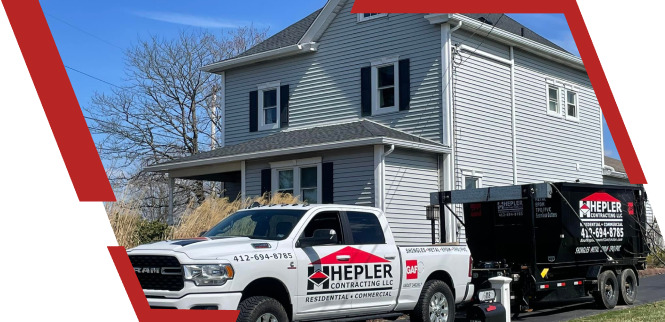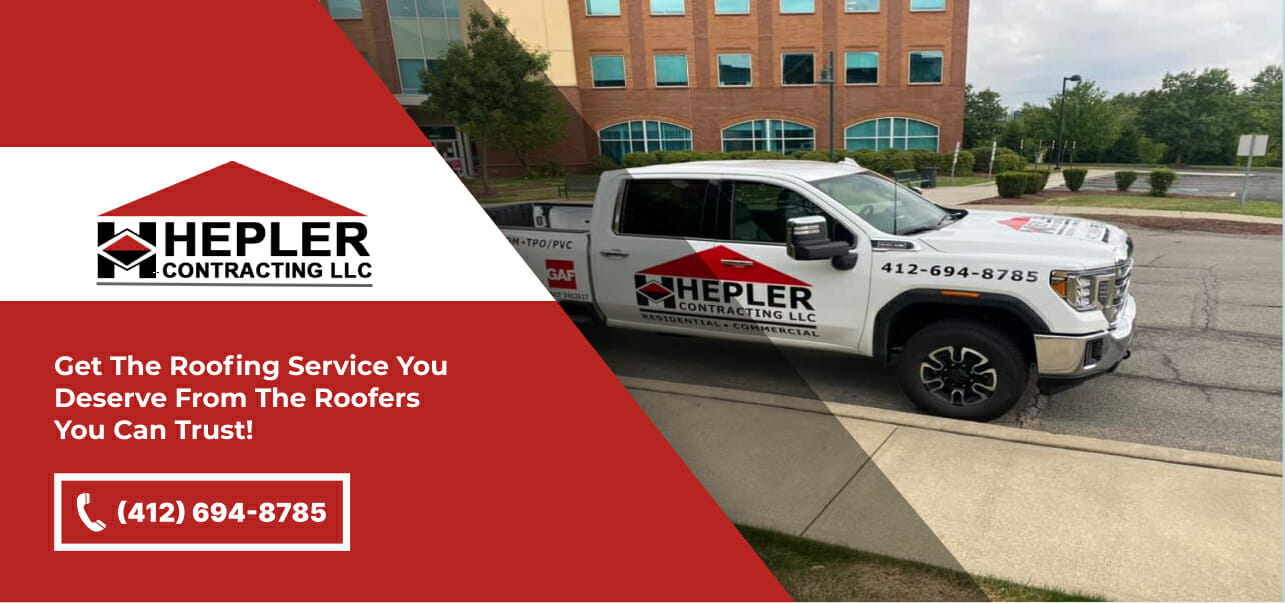When considering the durability and longevity of shingle roofs, Pennsylvania’s unique climate has a large effect. The average lifespan of shingle roofs varies significantly based on regional weather patterns, maintenance practices, and the materials used. In this article, we will explore these critical factors that influence how long shingle roofs last in Pennsylvania, providing homeowners with valuable insights to help when it comes to making a decision in regard to their roofing needs.
Shingle roofs are a popular choice among Pennsylvania homeowners due to their appeal and cost-effectiveness. However, the weather conditions across the state, from snowy winters to humid summers, pose challenges that affect their durability. By understanding the factors that impact a shingle roof’s lifespan, homeowners can better maintain their roofs in these cold climates. This blog post will not only highlight the average lifespan of shingle roofs but also discuss the best shingle materials for longevity and provide tips on maintaining your roof to maximize its life expectancy.
Recognizing the signs that your shingle roof needs replacement is crucial. Timely intervention can prevent more significant issues and ensure that your home remains safe and well-protected. With this blog post, we aim to equip you with the knowledge needed to make informed decisions about your roofing system, ensuring it stands the test of time against Pennsylvania’s demanding weather conditions.
The Average Lifespan of Shingle Roofs in Pennsylvania
Understanding the average lifespan of shingle roofs in Pennsylvania provides homeowners with critical information for planning maintenance and anticipating replacements. Typically, shingle roofs in this region can last anywhere from 15 to 25 years. This timeline largely depends on several factors, including the quality of installation, the type of materials used, and the level of ongoing maintenance.
When compared to the national average, the lifespan of shingle roofs in Pennsylvania is generally consistent with other regions across the United States. However, specific local conditions can place additional stress on roofing materials. These environmental factors call for a need to select and maintain the roofing materials over time to ensure longevity.
For instance, choosing shingles that are specially designed to withstand freeze-thaw cycles and have good water resistance can make a significant difference in extending a roof’s lifespan in Pennsylvania’s climate. Regular maintenance, including periodic inspections and timely repairs, also plays a crucial role in maximizing the lifespan of shingle roofs, particularly in areas prone to severe weather conditions.
Key Factors Affecting Shingle Roof Longevity in Places Like Pennsylvania
Pennsylvania’s climate significantly impacts the wear and tear on shingle roofs. The state’s weather patterns, characterized by cold, snowy winters and hot, humid summers, can accelerate the speed at which roofing materials deteriorate. This means that shingle roofs in Pennsylvania may experience different rates of wear compared to other regions, directly influencing the average lifespan of the roofs in this location.
Local environmental conditions also play a crucial role in determining how long shingle roofs will last. For example, areas with a high amount of trees can lead to more leaves and debris accumulating on the roof, which tends to retain moisture on the roof’s surface and cause the shingles to deteriorate faster. Similarly, regions closer to industrial zones might expose roofs to harsher chemicals and pollutants, potentially shortening the lifespan of the shingles. Understanding these factors is essential for homeowners who are considering which type of roofing materials to get, and what type of shingle is best.
Best Practices for Maintaining Shingle Roofs in Cold Climates
Regular inspections and a well-planned maintenance schedule are crucial to extending the lifespan of shingle roofs in Pennsylvania, especially given the harsh winter conditions. As part of shingle maintenance and keep your roof lasting for a long time, homeowners are advised to conduct biannual inspections—preferably in the spring and fall—to identify and address any damage that harsh weather may have caused. This proactive approach can significantly impact the longevity and performance of your roofing system.
Winterizing your roof is another essential way to enhance its durability. This includes ensuring that your attic is well-insulated and ventilated to prevent ice dams, which can cause significant damage to shingles. Additionally, clearing gutters and downspouts of debris is vital to prevent water accumulation and freezing, which can lead to roof damage over time. Homeowners should also consider using roofing materials that are suited for cold climates and offer higher resistance to wind, freeze-thaw cycles, and heavy snow loads.
Choosing the Right Shingle Materials for Pennsylvania Weather
If you decide you want shingles for your home, understanding the specific demands of the local climate is crucial in order to find the right ones for your needs. The region’s distinct seasonal changes, with cold, snowy winters and hot, humid summers, require roofing materials that can withstand diverse weather conditions. The best shingle materials for longevity not only offer durability but also help maintain the aesthetic value of the property.
Investing in high-quality shingles is advantageous for Pennsylvania homeowners. Premium architectural shingles tend to have better warranties, enhanced wind resistance, and improved technology to resist algae and sun damage, factors that contribute significantly to extending the lifespan of your roof. While the initial cost might be higher, the long-term savings in maintenance and replacement costs make it a wise decision.
It is also essential for homeowners to consider the average lifespan of shingle roofs when choosing materials. Shingles made from asphalt, for instance, are popular due to their cost-effectiveness and decent lifespan, typically lasting between 15 to 30 years depending on maintenance and environmental conditions. For those living in particularly harsh climates, materials like metal or slate might be more appropriate, though they come at a higher cost.
Ultimately, selecting the right shingle material requires balancing cost, aesthetic preferences, and durability. Understanding these aspects will help ensure that your roof is equipped to handle Pennsylvania’s challenging weather conditions, maximizing both performance and lifespan.
Signs That Indicate Your Shingle Roof Needs Replacement
For homeowners in Pennsylvania, recognizing the signs that indicate the need for a shingle roof replacement is crucial. This awareness can prevent further damage and ensure the safety and integrity of your home. One common sign is the presence of cracked, curled, or missing shingles, often exacerbated by Pennsylvania’s cold and snowy climate. These physical deformities in your roof can lead to leaks and structural damage over time.
Another indicator is the age of your roof. If your shingle roof is approaching or has surpassed its expected lifespan, it might be time to consider a replacement. This is especially true if you notice an increase in your heating and cooling bills, which can signify that your roof is no longer providing adequate insulation.
Additionally, frequent need for repairs can be a clear sign that your roof’s overall condition is deteriorating. If you find yourself constantly patching up areas of your roof, it could be more cost-effective in the long run to opt for a full replacement. This will not only enhance the protection and appearance of your home but also improve its market value and energy efficiency.
By being vigilant and responding to these signs promptly, homeowners can make informed decisions about whether to repair or replace their roofing systems. Understanding and acting on these indicators can save a significant amount of time and money, ensuring that your home remains a safe and comfortable environment for your family.
Planning for a Roof Replacement or Maintenance in Pennsylvania
When it’s time to plan for roof replacement or maintenance in Pennsylvania, taking the right steps and choosing suitable local contractors are essential. Understanding how long shingle roofs last in Pennsylvania can guide homeowners through this process efficiently.
Assessing the condition of your roof is vital in planning for a roof replacement or maintenance program. Look for signs your shingle roof needs replacement, such as missing shingles or significant wear and tear. This evaluation will help determine whether maintenance or a complete replacement is necessary. Factors like the shingle roof lifespan and cold weather shingle maintenance play a significant role in these decisions.
You should also opt for local roofing contractors who understand the regional challenges, including Pennsylvania’s weather conditions. These professionals are more likely to recommend the best shingle materials for longevity and perform installations that can withstand local weather patterns, thereby ensuring optimal performance and durability of your roofing system.
By following these guidelines, homeowners can ensure that their roofing projects are successful and cost-effective, aligning with the average lifespan of shingle roofs in the region and adapting well to the local climate’s demands.
Get Expert Shingle Roof Replacement or Repair Services in Pennsylvania
When it comes to ensuring the longevity of your shingle roof in Pennsylvania, Hepler Contracting is your trusted partner. With our expertise in dealing with Pennsylvania’s unique climate and environmental factors, we are dedicated to providing top-notch roofing services that stand the test of time. Don’t wait until it’s too late! Reach out to our team at Hepler Contracting at (412) 694-8785 to schedule a comprehensive roof inspection and maintenance plan tailored to your specific needs. Allow us to safeguard your investment and ensure your peace of mind.


